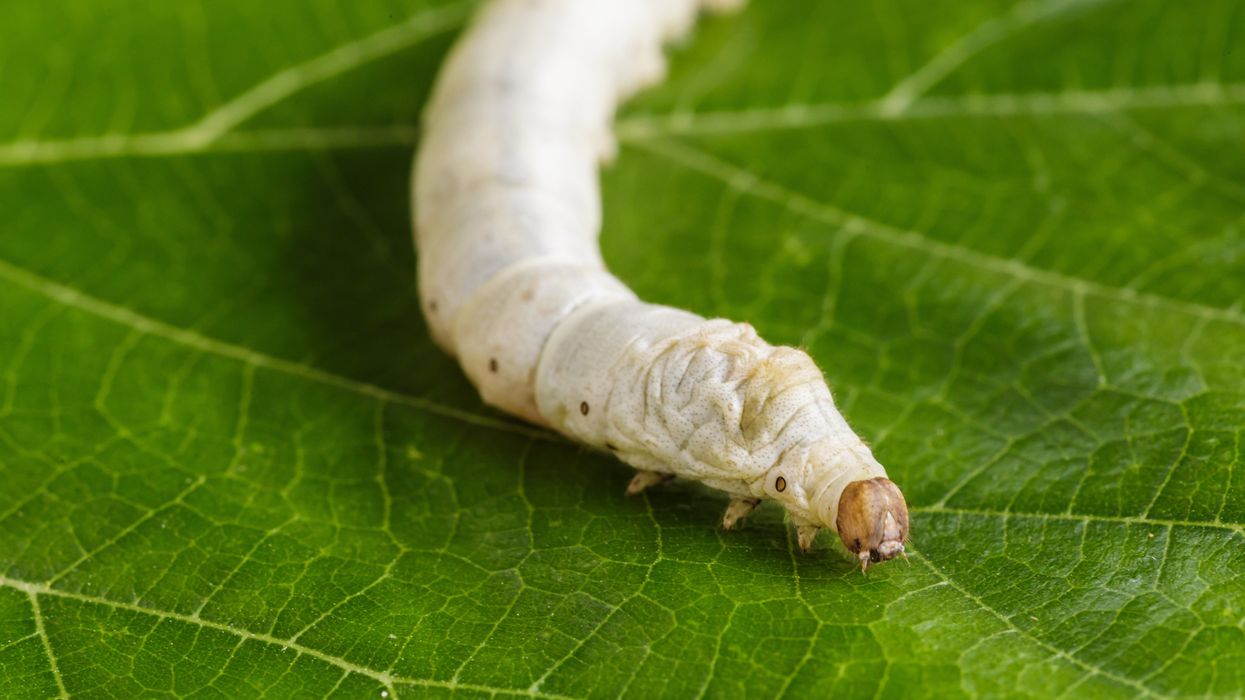DNA Tests for Intelligence Ignore the Real Reasons Why Kids Succeed or Fail

A child prodigy considers a math equation.
[Editor's Note: This essay is in response to our current Big Question, which we posed to experts with different perspectives: "How should DNA tests for intelligence be used, if at all, by parents and educators?"]
It's 2019. Prenatal genetic tests are being used to help parents select from healthy and diseased eggs. Genetic risk profiles are being created for a range of common diseases. And embryonic gene editing has moved into the clinic. The science community is nearly unanimous on the question of whether we should be consulting our genomes as early as possible to create healthy offspring. If you can predict it, let's prevent it, and the sooner, the better.
There are big issues with IQ genetics that should be considered before parents and educators adopt DNA IQ predictions.
When it comes to care of our babies, kids, and future generations, we are doing things today that we never even dreamed would be possible. But one area that remains murky is the long fraught question of IQ, and whether to use DNA science to tell us something about it. There are big issues with IQ genetics that should be considered before parents and educators adopt DNA IQ predictions.
IQ tests have been around for over a century. They've been used by doctors, teachers, government officials, and a whole host of institutions as a proxy for intelligence, especially in youth. At times in history, test results have been used to determine whether to allow a person to procreate, remain a part of society, or merely stay alive. These abuses seem to be a distant part of our past, and IQ tests have since garnered their fair share of controversy for exhibiting racial and cultural biases. But they continue to be used across society. Indeed, much of the literature aimed at expecting parents justifies its recommendations (more omegas, less formula, etc.) based on promises of raising a baby's IQ.
This is the power of IQ testing sans DNA science. Until recently, the two were separate entities, with IQ tests indicating a coefficient created from individual responses to written questions and genetic tests indicating some disease susceptibility based on a sequence of one's DNA. Yet in recent years, scientists have begun to unlock the secrets of inherited aspects of intelligence with genetic analyses that scan millions of points of variation in DNA. Both bench scientists and direct-to-consumer companies have used these new technologies to find variants associated with exceptional IQ scores. There are a number of tests on the open market that parents and educators can use at will. These tests purport to reveal whether a child is inherently predisposed to be intelligent, and some suggest ways to track them for success.
I started looking into these tests when I was doing research for my book, "Social by Nature: The Promise and Peril of Sociogenomics." This book investigated the new genetic science of social phenomena, like educational attainment and political persuasion, investment strategies, and health habits. I learned that, while many of the scientists doing much of the basic research into these things cautioned that the effects of genetic factors were quite small, most saw testing as one data point among many that could help to somehow level the playing field for young people. The rationale went that in certain circumstances, some needed help more than others. Why not put our collective resources together to help them?
Good nutrition, support at home, and access to healthcare and education make a huge difference in how people do.
Some experts believed so strongly in the power of DNA behavioral prediction that they argued it would be unfair not to use predictors to determine a kid's future, prevent negative outcomes, and promote the possibility for positive ones. The educators out in the wider world that I spoke with agreed. With careful attention, they thought sociogenomic tests could help young people get the push they needed when they possessed DNA sequences that weren't working in their favor. Officials working with troubled youth told me they hoped DNA data could be marshaled early enough that kids would thrive at home and in school, thereby avoiding ending up in their care. While my conversations with folks centered around sociogenomic data in general, genetic IQ prediction was completely entangled in it all.
I present these prevailing views to demonstrate both the widespread appeal of genetic predictors as well as the well-meaning intentions of those in favor of using them. It's a truly progressive notion to help those who need help the most. But we must question whether genetic predictors are data points worth looking at.
When we examine the way DNA IQ predictors are generated, we see scientists grouping people with similar IQ test results and academic achievements, and then searching for the DNA those people have in common. But there's a lot more to scores and achievements than meets the eye. Good nutrition, support at home, and access to healthcare and education make a huge difference in how people do. Therefore, the first problem with using DNA IQ predictors is that the data points themselves may be compromised by numerous inaccuracies.
We must then ask ourselves where the deep, enduring inequities in our society are really coming from. A deluge of research has shown that poor life outcomes are a product of social inequalities, like toxic living conditions, underfunded schools, and unhealthy jobs. A wealth of research has also shown that race, gender, sexuality, and class heavily influence life outcomes in numerous ways. Parents and caregivers feed, talk, and play differently with babies of different genders. Teachers treat girls and boys, as well as members of different racial and ethnic backgrounds, differently to the point where they do better and worse in different subject areas.
Healthcare providers consistently racially profile, using diagnostics and prescribing therapies differently for the same health conditions. Access to good schools and healthcare are strongly mitigated by one's race and socioeconomic status. But even youth from privileged backgrounds suffer worse health and life outcomes when they identify or are identified as queer. These are but a few examples of the ways in which social inequities affect our chances in life. Therefore, the second problem with using DNA IQ predictors is that it obscures these very real, and frankly lethal, determinants. Instead of attending to the social environment, parents and educators take inborn genetics as the reason for a child's successes or failures.
It is time that we shift our priorities from seeking genetic causes to fixing the social causes we know to be real.
The other problem with using DNA IQ predictors is that research into the weightiness of DNA evidence has shown time and again that people take DNA evidence more seriously than they do other kinds of evidence. So it's not realistic to say that we can just consider IQ genetics as merely one tiny data point. People will always give more weight to DNA evidence than it deserves. And given its proven negligible effect, it would be irresponsible to do so.
It is time that we shift our priorities from seeking genetic causes to fixing the social causes we know to be real. Parents and educators need to be wary of solutions aimed at them and their individual children.
[Editor's Note: Read another perspective in the series here.]
Fast for Longevity, with Less Hunger, with Dr. Valter Longo
Valter Longo, a biogerontologist at USC, and centenarian Rocco Longo (no relation) appear together in Italy in 2021. The elder Longo is from a part of Italy where people have fasted regularly and are enjoying long lifespans.
You’ve probably heard about intermittent fasting, where you don’t eat for about 16 hours each day and limit the window where you’re taking in food to the remaining eight hours.
But there’s another type of fasting, called a fasting-mimicking diet, with studies pointing to important benefits. For today’s podcast episode, I chatted with Dr. Valter Longo, a biogerontologist at the University of Southern California, about all kinds of fasting, and particularly the fasting-mimicking diet, which minimizes hunger as much as possible. Going without food for a period of time is an example of good stress: challenges that work at the cellular level to boost health and longevity.
Listen on Apple | Listen on Spotify | Listen on Stitcher | Listen on Amazon | Listen on Google
If you’ve ever spent more than a few minutes looking into fasting, you’ve almost certainly come upon Dr. Longo's name. He is the author of the bestselling book, The Longevity Diet, and the best known researcher of fasting-mimicking diets.
With intermittent fasting, your body might begin to switch up its fuel type. It's usually running on carbs you get from food, which gets turned into glucose, but without food, your liver starts making something called ketones, which are molecules that may benefit the body in a number of ways.
With the fasting-mimicking diet, you go for several days eating only types of food that, in a way, keep themselves secret from your body. So at the level of your cells, the body still thinks that it’s fasting. This is the best of both worlds – you’re not completely starving because you do take in some food, and you’re getting the boosts to health that come with letting a fast run longer than intermittent fasting. In this episode, Dr. Longo talks about the growing number of studies showing why this could be very advantageous for health, as long as you undertake the diet no more than a few times per year.
Dr. Longo is the director of the Longevity Institute at USC’s Leonard Davis School of Gerontology, and the director of the Longevity and Cancer program at the IFOM Institute of Molecular Oncology in Milan. In addition, he's the founder and president of the Create Cures Foundation in L.A., which focuses on nutrition for the prevention and treatment of major chronic illnesses. In 2016, he received the Glenn Award for Research on Aging for the discovery of genes and dietary interventions that regulate aging and prevent diseases. Dr. Longo received his PhD in biochemistry from UCLA and completed his postdoc in the neurobiology of aging and Alzheimer’s at USC.
Show links:
Create Cures Foundation, founded by Dr. Longo: www.createcures.org
Dr. Longo's Facebook: https://www.facebook.com/profvalterlongo/
Dr. Longo's Instagram: https://www.instagram.com/prof_valterlongo/
Dr. Longo's book: The Longevity Diet
The USC Longevity Institute: https://gero.usc.edu/longevity-institute/
Dr. Longo's research on nutrition, longevity and disease: https://pubmed.ncbi.nlm.nih.gov/35487190/
Dr. Longo's research on fasting mimicking diet and cancer: https://pubmed.ncbi.nlm.nih.gov/34707136/
Full list of Dr. Longo's studies: https://pubmed.ncbi.nlm.nih.gov/?term=Longo%2C+Valter%5BAuthor%5D&sort=date
Research on MCT oil and Alzheimer's: https://alz-journals.onlinelibrary.wiley.com/doi/f...
Keto Mojo device for measuring ketones
Silkworms with spider DNA spin silk stronger than Kevlar
Silkworm silk is fragile, which limits its uses, but a few extra genes can help.
Story by Freethink
The study and copying of nature’s models, systems, or elements to address complex human challenges is known as “biomimetics.” Five hundred years ago, an elderly Italian polymath spent months looking at the soaring flight of birds. The result was Leonardo da Vinci’s biomimetic Codex on the Flight of Birds, one of the foundational texts in the science of aerodynamics. It’s the science that elevated the Wright Brothers and has yet to peak.
Today, biomimetics is everywhere. Shark-inspired swimming trunks, gecko-inspired adhesives, and lotus-inspired water-repellents are all taken from observing the natural world. After millions of years of evolution, nature has quite a few tricks up its sleeve. They are tricks we can learn from. And now, thanks to some spider DNA and clever genetic engineering, we have another one to add to the list.
The elusive spider silk
We’ve known for a long time that spider silk is remarkable, in ways that synthetic fibers can’t emulate. Nylon is incredibly strong (it can support a lot of force), and Kevlar is incredibly tough (it can absorb a lot of force). But neither is both strong and tough. In all artificial polymeric fibers, strength and toughness are mutually exclusive, and so we pick the material best for the job and make do.
Spider silk, a natural polymeric fiber, breaks this rule. It is somehow both strong and tough. No surprise, then, that spider silk is a source of much study.The problem, though, is that spiders are incredibly hard to cultivate — let alone farm. If you put them together, they will attack and kill each other until only one or a few survive. If you put 100 spiders in an enclosed space, they will go about an aggressive, arachnocidal Hunger Games. You need to give each its own space and boundaries, and a spider hotel is hard and costly. Silkworms, on the other hand, are peaceful and productive. They’ll hang around all day to make the silk that has been used in textiles for centuries. But silkworm silk is fragile. It has very limited use.
The elusive – and lucrative – trick, then, would be to genetically engineer a silkworm to produce spider-quality silk. So far, efforts have been fruitless. That is, until now.
We can have silkworms creating silk six times as tough as Kevlar and ten times as strong as nylon.
Spider-silkworms
Junpeng Mi and his colleagues working at Donghua University, China, used CRISPR gene-editing technology to recode the silk-creating properties of a silkworm. First, they took genes from Araneus ventricosus, an East Asian orb-weaving spider known for its strong silk. Then they placed these complex genes – genes that involve more than 100 amino acids – into silkworm egg cells. (This description fails to capture how time-consuming, technical, and laborious this was; it’s a procedure that requires hundreds of thousands of microinjections.)
This had all been done before, and this had failed before. Where Mi and his team succeeded was using a concept called “localization.” Localization involves narrowing in on a very specific location in a genome. For this experiment, the team from Donghua University developed a “minimal basic structure model” of silkworm silk, which guided the genetic modifications. They wanted to make sure they had the exactly right transgenic spider silk proteins. Mi said that combining localization with this basic structure model “represents a significant departure from previous research.” And, judging only from the results, he might be right. Their “fibers exhibited impressive tensile strength (1,299 MPa) and toughness (319 MJ/m3), surpassing Kevlar’s toughness 6-fold.”
A world of super-materials
Mi’s research represents the bursting of a barrier. It opens up hugely important avenues for future biomimetic materials. As Mi puts it, “This groundbreaking achievement effectively resolves the scientific, technical, and engineering challenges that have hindered the commercialization of spider silk, positioning it as a viable alternative to commercially synthesized fibers like nylon and contributing to the advancement of ecological civilization.”
Around 60 percent of our clothing is made from synthetic fibers like nylon, polyester, and acrylic. These plastics are useful, but often bad for the environment. They shed into our waterways and sometimes damage wildlife. The production of these fibers is a source of greenhouse gas emissions. Now, we have a “sustainable, eco-friendly high-strength and ultra-tough alternative.” We can have silkworms creating silk six times as tough as Kevlar and ten times as strong as nylon.
We shouldn’t get carried away. This isn’t going to transform the textiles industry overnight. Gene-edited silkworms are still only going to produce a comparatively small amount of silk – even if farmed in the millions. But, as Mi himself concedes, this is only the beginning. If Mi’s localization and structure-model techniques are as remarkable as they seem, then this opens up the door to a great many supermaterials.
Nature continues to inspire. We had the bird, the gecko, and the shark. Now we have the spider-silkworm. What new secrets will we unravel in the future? And in what exciting ways will it change the world?
This article originally appeared on Freethink, home of the brightest minds and biggest ideas of all time.


